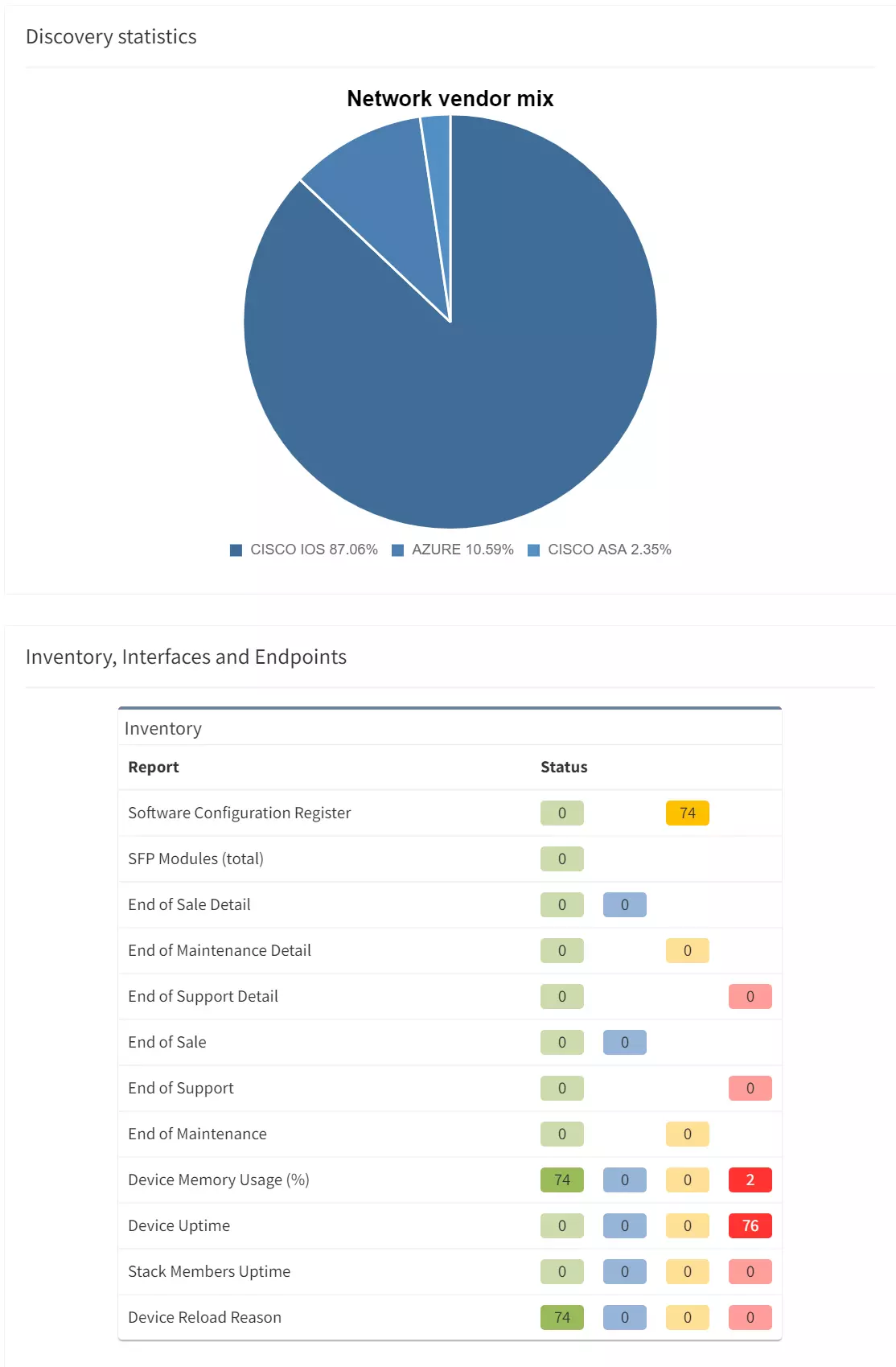IP Fabric is a network analytics platform for multi-vendor environments that automates network discovery, network topology diagrams at a protocol level, network security compliance audit and network documentation. The platform enables an intent-based approach to network management and instant application path simulation over large-scale networks.
IP Fabric serves as a single point of truth for all network inventory and protocol data and provides up-to-date network topology diagrams. It speeds up the troubleshooting and root-cause analysis processes with simple network search and end-to-end application path testing.
Apart from significant benefits to network administrators, it elevates collaboration with other teams and systems via its standard interfaces and helps to automate network provisioning and the detection of inconsistent protocol states, network loops or security issues based on user-defined rules.
The IP Fabric platform collects data from the network on a regular basis to provide in-depth analytics. The output of the data collection is a digital snapshot of the entire network at the time of discovery. But IP Fabric does not monitor the network in real-time.
Monitoring tools are still crucial to your network operations processes; raised alerts and alarms will let engineers know there is something to be assessed or investigated.
Analytics of the network will give you the ability to compare past states of the network, compare changes, analyze full route-cause of issues to prevent future repeats of the same issues and improve efficiency of troubleshooting processes through an automated toolset.
IP Fabric must be deployed to a dedicated virtual machine. See Operational Requirements).
IP Fabric is in most cases deployed as an on-premises solution. It does not require any Internet connectivity to operate or verify the license or run discovery. Alternatively, it can be deployed in the cloud and discover networks via private tunnels.
No additional supporting servers or licenses are needed for successful deployment.
IP Fabric is a virtual appliance that runs on various virtualization platforms. It does not need a standalone hardware appliance by design. See Operational Requirements for more details.
The product is licensed on a subscription basis (including support). The only factor we account for in the license price is the number of active network devices (switches, routers, firewalls, load balancers, wireless controllers) in the target network. Wireless Access-Points are not included in the license.
One engineer is enough to handle the task of deployment and testing.
IP Fabric collects data via Command-Line Interface (CLI) with SSH/Telnet directly from each network device individually. The best location for virtual machine installation is in the management part of the network with enabled security path over SSH/Telnet protocol from the server’s IP address as a source IP for all session requests. Access-Lists, Firewall filters or related Security policies should be adjusted to enable the connection.
The overall impact is very low on network resources. IP Fabric is reading all data from a device with a single SSH session in a similar way as the administrator, only faster.
It is very common for IP Fabric to run discovery during business hours when little to no irregularities were observed in monitoring.
IP Fabric collects data only via Command-Line Interface (CLI) with set of known operational commands on supported network devices. Read-only access is sufficient for discovery. Additionally, the platform uses API to communicate with vendor controllers (Versa, Viptela) or cloud vendors (AWS, Azure, NSX-T).
The platform itself provides all analytics information based on regular network scans (the snapshots). It is not a real-time monitoring solution but an analytical tool.
The platform collects a variety of data specific to each network device. Starting with basic inventory and protocol states, detailed protocol tables or links. To provide full transparency, all operational commands used for each vendor/platform are well documented.
No, IP Fabric doesn’t collect any SNMP data from active network devices. Our CLI–based approach achieves a greater level of detail compared to SNMP.
For the very first network discovery, IP Fabric needs to be deployed with the OVA image (provided by us on request). Then the platform needs to have correct credentials to access active network devices via SSH/Telnet. The security perimeter needs to enable communication from the IP Fabric platform to network devices for mentioned CLI protocols. And optionally, you can provide a single IP address as a starting point for discovery.
IP Fabric can discover all supported IP-based active network devices. In general those are switches, routers, firewalls, load-balancers, WAN concentrators, wireless controllers, wireless access-points.
IP Fabric is a powerful tool for multi-vendor, large-scale networks. The network vendor list is ever-expanding with new items added each release and can be found at our Support Matrix.
If there is a vendor in your network that is currently not included in the supported matrix, it won’t be discovered and will be listed as unmanaged neighbor in the platform. We are implementing new vendors with almost every release, so feel free to ask your IP Fabric sales or technical representative about the road-map priorities for the next phase. Support for the vendor in question may have already been road-mapped.
No, it isn't. It would add an unnecessary level of complexity for both IP Fabric engineers and the customers. Encryption key provisioning would need to be solved in case that filesystem or underlying block device is encrypted. This would require either passphrase prompt on every boot or integration into secret store on the deployment infrastructure side. We recommend to the customers to handle encryption at storage level (e.g., VMware Datastore).
No, it isn't. Passwords at rest in the database and techsupports are encrypted to ensure the safety of the customers' private data.




